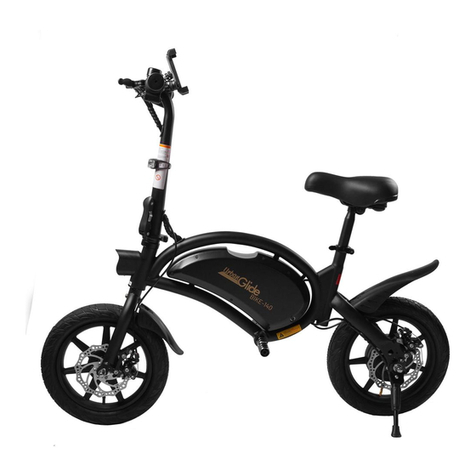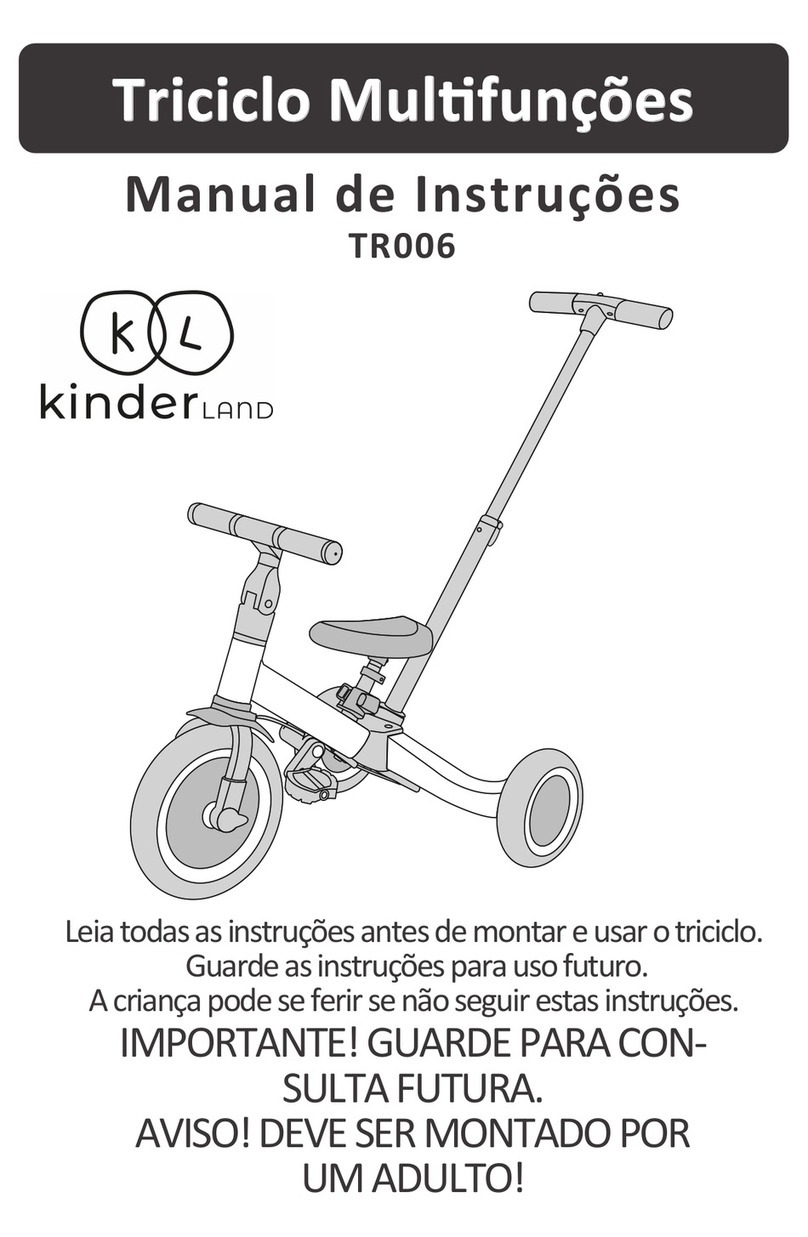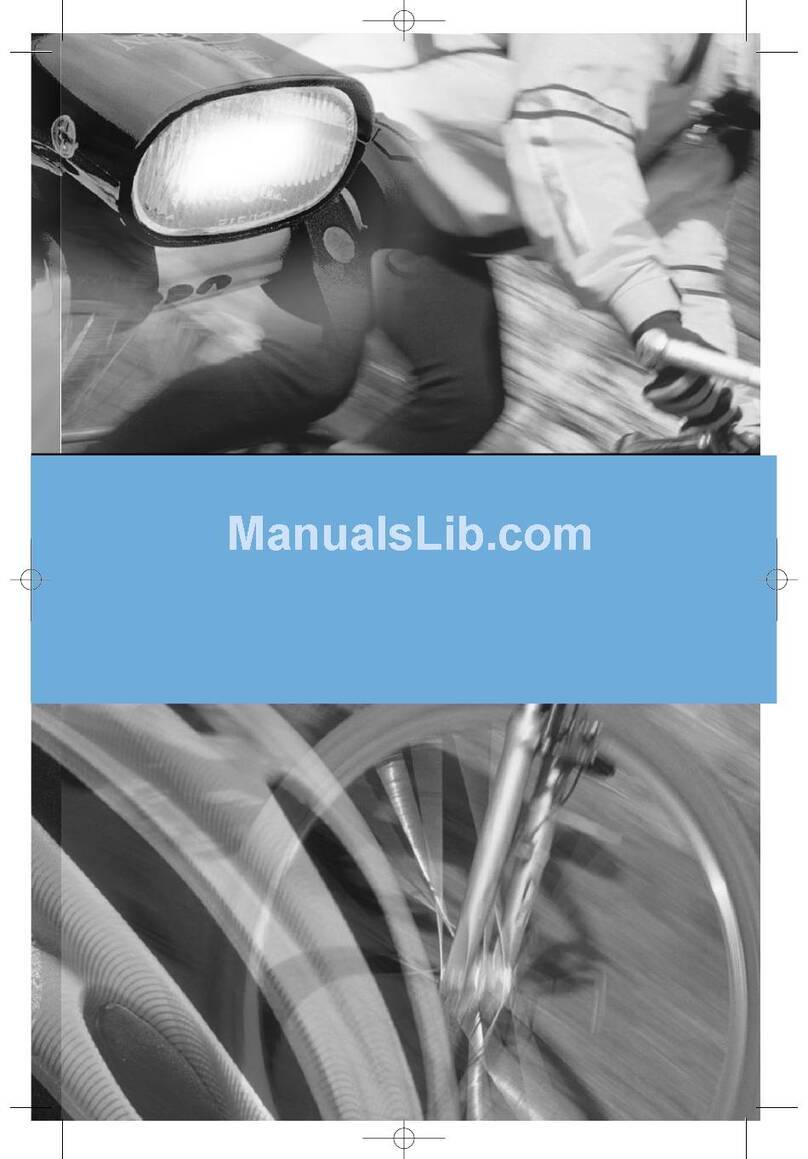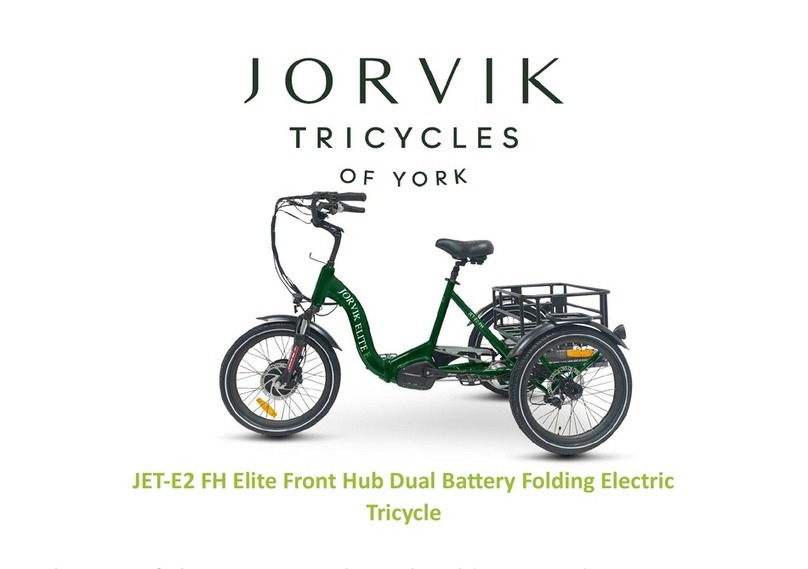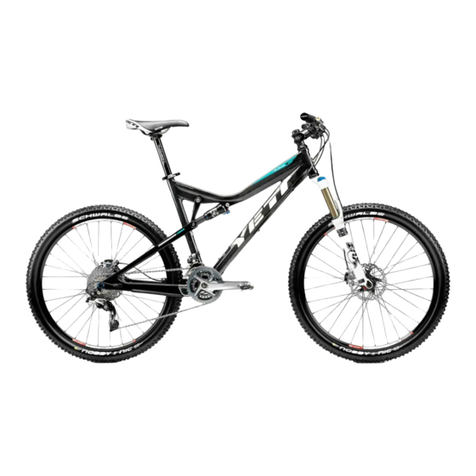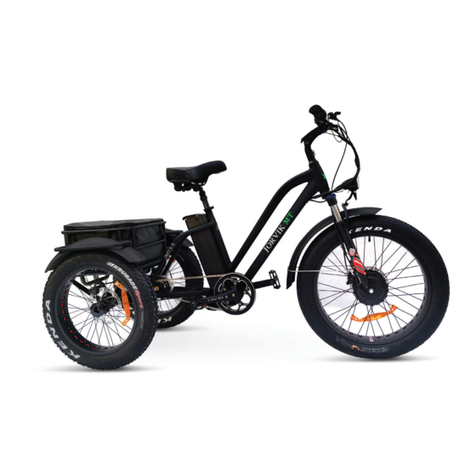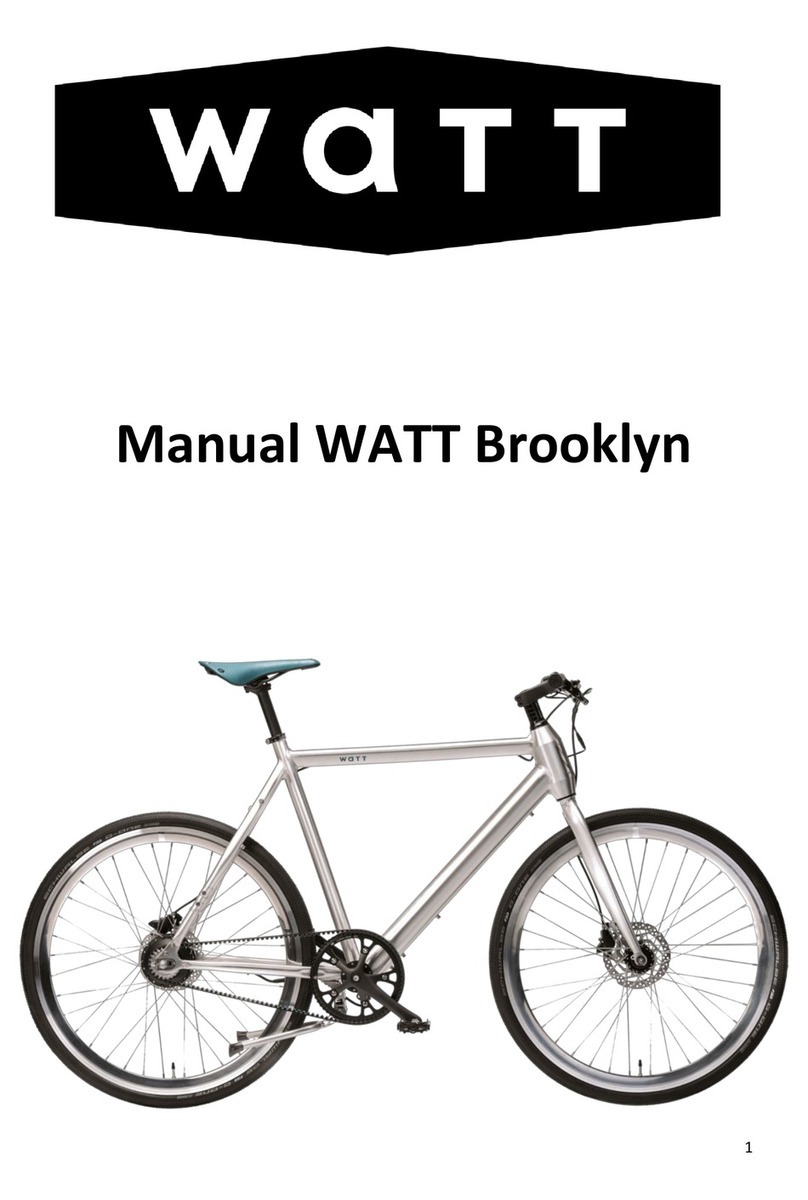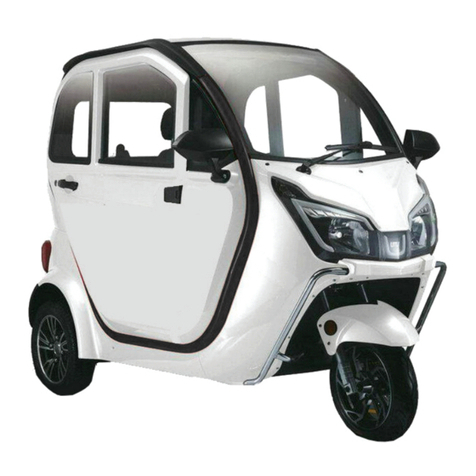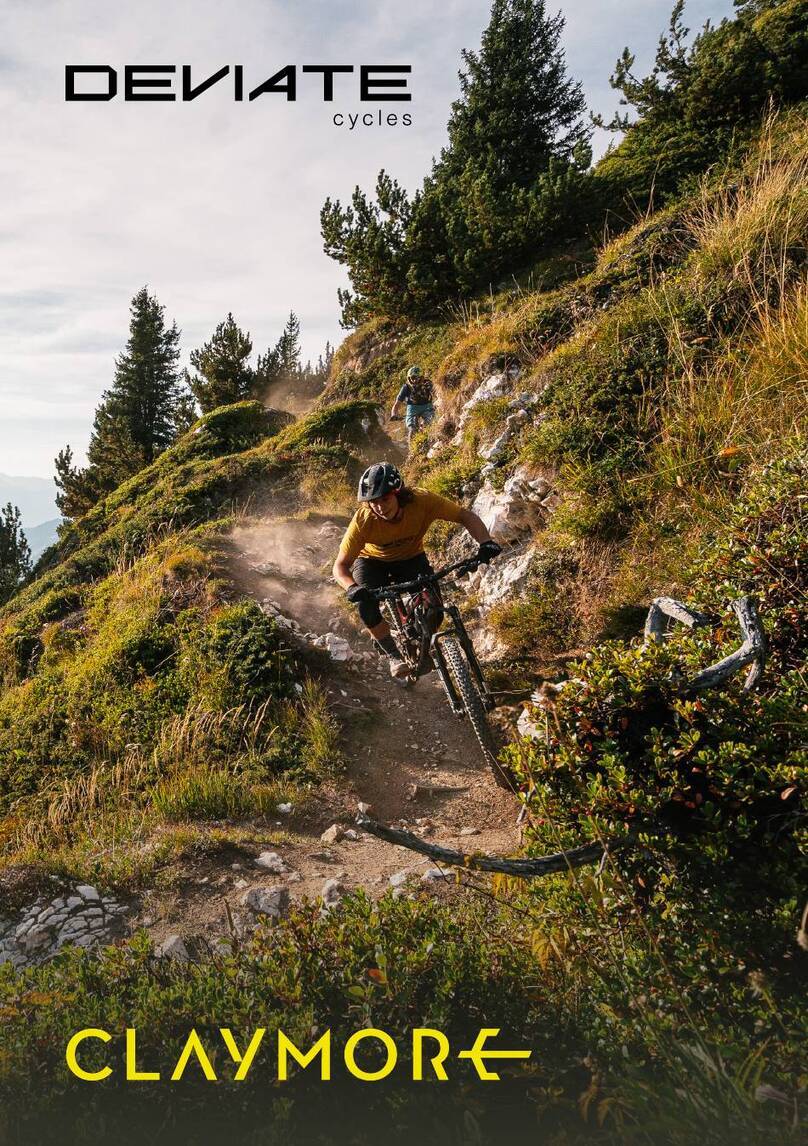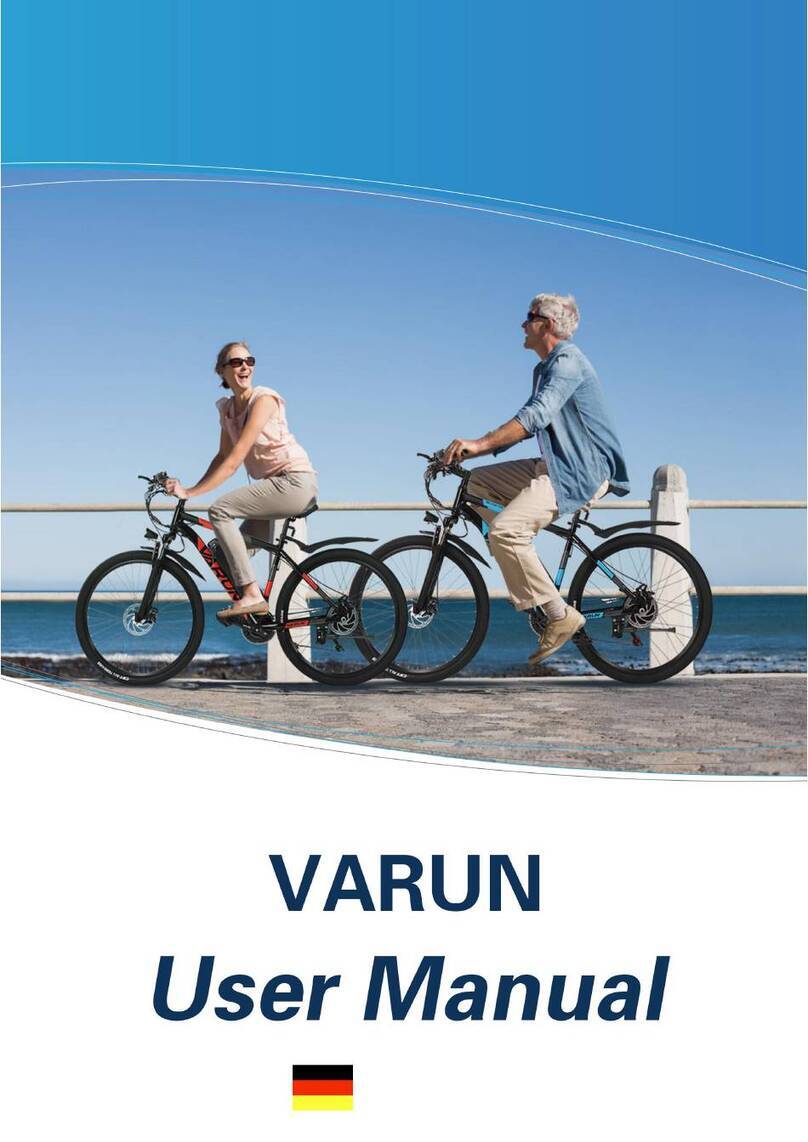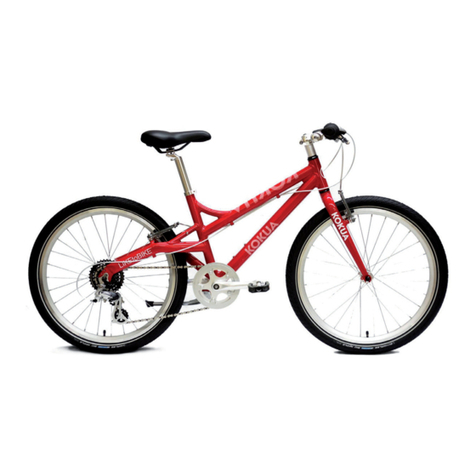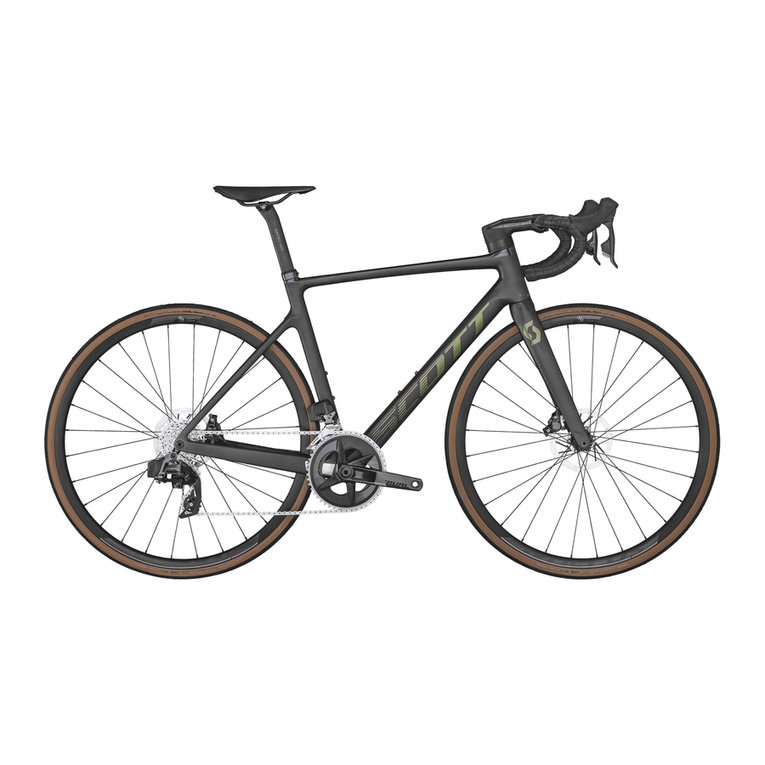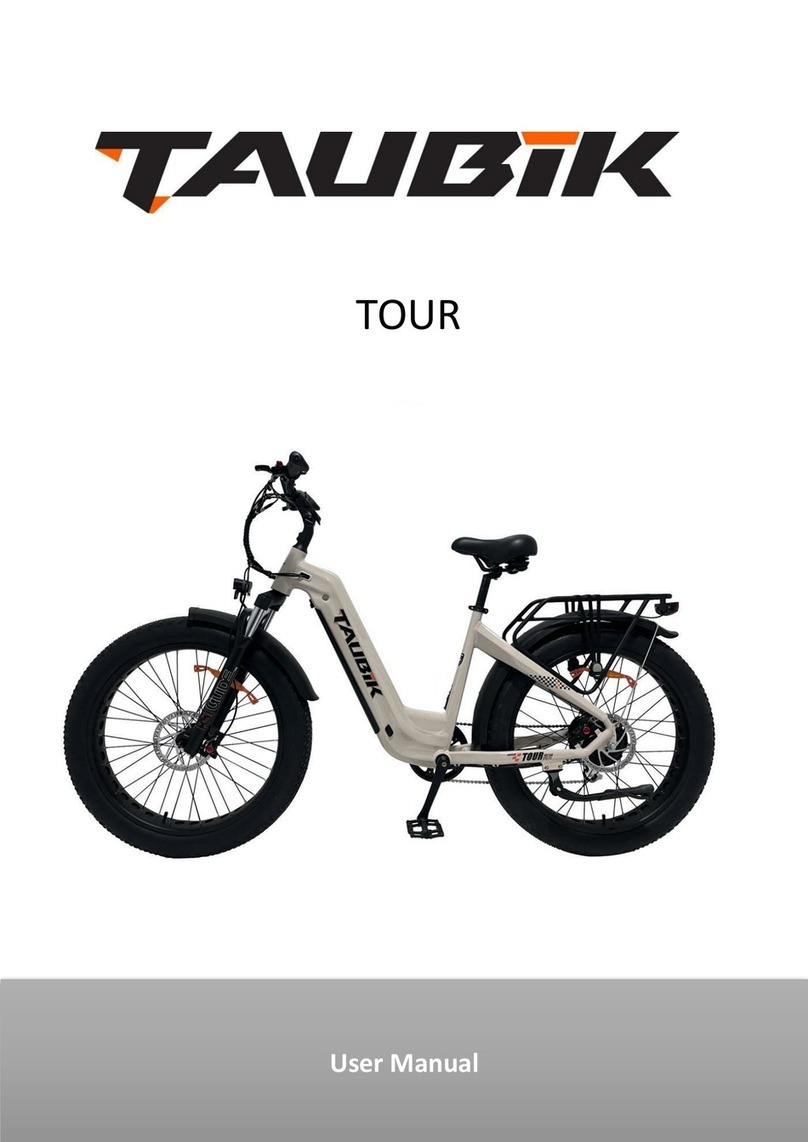Rocker BMX User guide


Hopefully this is what you are looking at
right now (assuming you downloaded
these instructions). Carefully cut any
straps, pop open the staples (warning
these can be very sharp, take great care),
open the box and lay out the contents, it
should look something like the picture
below.
Now carefully remove all of the foam,
card and plastic protective packaging
using knife/scissors. Please be extremely
careful not to damage your shiny new
paintwork. Once all packaging has been
removed lay out the main Rocker
assembly and loose components (as
below) and have a visual check for any
significant shipping damage.
Tools required for basic assembly/checking
...and for choosing Rocker BMX, you have
chosen wisely. We appreciate the market is
slightly clouded with various brands of so
called ‘mini bmx’.
However, Rocker is very different from other brands; it was designed
by riders and will always be for riders. Rocker is designed based on
many years experience in the BMX industry. It’s tough, VERY tough.
The colourways have all been created by fans of Rocker BMX,
making Rocker truly owned by the people who ride it. Everyone
has the opportunity to be involved with Rocker BMX, so please
go to www.facebook.com/rockerbmx for more information on
how to get involved.
Before you start to get to grips with assembling your new Rocker
BMX, please take the time to read this instruction manual carefully.
If you are not proficient with tools and assembling bikes, we suggest
you ask someone who is proficient to give you a hand.
First up: the tools you need to assemble your Rocker BMX.
• Knife / scissors
• 5mm + 6mm allen keys
• 15mm + 17mm + 19mm ring/open spanners
• Pump with Schrader attachment (normal BMX / car valve)
Please note: there maybe minor scratches as a result of the courier’s heavy handedness,
this is a fact of mail order that sadly cannot be avoided. Therefore please note we cannot
replace bikes/parts as a result of minor scratches.

You should have the main Rocker BMX
assembly, some bars with pre installed
grips, a pair of pedals (one stamped L the
other stamped R) and a seat post unit. If
anything is missing, now is the time to let
us know.
To make life easier, we are going to first
install the pedals. First off the left hand
pedal stamped ‘L’ using the 15mm
spanner. Please note, to tighten a left
pedal you turn anti clockwise NOT
clockwise. Be careful not to cross thread
and make sure the pedal is done up nice
and tight. Running loose pedals destroys
the threads very quickly.
Now, carefully remove the stem faceplate
bolts x 4 with a 6 mm allen key. Ensuring
the correct orientation, hang the
handlebars in the stem bar recess and
carefully replace the stem faceplate. Be
very careful to ensure the faceplate is
tightened evenly.
With the left pedal installed you can now
stand the bike up using the left pedal as
a bike stand. This makes the job a lot
easier. Now install the right hand pedals,
this time the pedal is turned clockwise to
tighten. Again be careful not to cross
thread the pedal and make sure the
pedal is done up nice and tight.
You can now easily pop the seat in, set
the desired height & tighten with a 5 mm
allen key. You will need to turn the bolt a
good 5 + rotations before it will start to
go tight for the first time.

Once the faceplate starts to bite the bars,
spin the bars up into the correct position
and finally clamp down the faceplate
nice and tight. If you find your bars move
(later when riding) you can try applying
a little grease to your faceplate bolts
(threads) which will allow your to tighten
them further still.
Check the front wheel alignment and
adjust as necessary (your stem rear pinch
bolts should still be loose at this stage).
Nip up the rear bolts then grab your bars
and check for excessive free play in the
headset bearings.
On the first delivery of Rockers, the front
wheel safety tabs are not installed, so at
this stage please check your bike to
make sure they are in place, they should
look like the picture above.
If the locking washer is not already in
place please loosen the wheel nuts with
a 19mm spanner, fully remove the wheel
nuts and install the locking tab safety
washers.
Once you are happy the front wheel is
installed correctly make sure in spins
freely.
If there is excessive play, remove it by
carefully tightening your headset pre
load bolt (stem pinch bolts MUST be
loose during this operation then
re-tightened to check free play).
If there is excessive play, remove it by
carefully tightening your headset pre
load bolt (stem pinch bolts MUST be
loose during this operation then
re-tightened to check free play).
Once any ‘rock’ has been dialled out,
check your bars turn freely left and right.
Once you are happy with the set up, tighten
up your stem pinch bolts nice and tight.

At this stage you may notice some wheel
wobble or tyre wobble. This is perfectly
normal and to be expected. The wheels
for Rocker BMX are adapted from hand
trucks (wheel barrow) applications and
are thus designed to be very strong at a
very low price. If you are concerned about
excessive tyre or wheel wobble, please
look carefully at your rim/hub assembly
as often it can be dialled out by loosening
the main four hub/rim bolts and
re-aligning the split rims. This can
however be fiddly and is only advised if
your rims are looking wildly out of true.
Minor wobble or tyre bulge should simply
be accepted as part of the character of
your new Rocker BMX.
We will be bringing out our own
aftermarket wheels and tyres in the future
that will rectify wheel wobble for high
speed ramp applications where wheel
wobble can sometimes be detected by
the rider.
After a few hours riding we suggest you
re-check your cone nuts & bearing free
play. Dial out as necessary (will become
loose as bearings bed in)
If your wheel is too loose (rattling loose
bearings) tighten the cone nuts. If it does
not spin freely and comes to a halt too
quickly, carefully loosen the cones nuts.
For this you will require a 17mm and a
19mm spanner
Now check your bottom bracket/crank
assembly. Turn the cranks & look at the
locking nut and cone to make sure they
have been installed correctly and are not
cross threaded. If you find that they are
please use suitable tools to loosen,
re-align and then pre-load your crank
bearings (this is very rare – please call us
if you require professional assistance in
such a case).
Rocker BMX uses a USA BB as standard,
we also manufacture aftermarket 3 piece
cranks and conversion BB’s with fully
sealed cartridge bearings (USA to
19mm), please see our website for
details www.rockerbmx.com should you
wish to upgrade your cranks
Whilst turning your cranks make sure that
the sprocket had been installed correctly
and runs straight and true.

Check rear wheel alignment and correct
as necessary using a 19mm spanner to
loosen the rear wheel nuts (make sure
your rear wheel nuts are tight prior to
riding your Rocker BMX). At the same
time ensure you have the correct chain
tension. The rocker uses a free wheel
and thus the chain should NOT be as
tight as it would be on a normal BMX with
a ‘driver’ as this will significantly slow
down your rear wheels free spin. Please
see following photo, chain should be
slightly loose but not flapping.
Once you are happy that everything is
aligned correctly and the chain tension
is correct, check that the back wheel
spins freely and adjust the cone nuts as
necessary. Again remember to check
these periodically, especially after the first
few hours riding. Dial out any loose play,
or over tightness and allow the wheels to
spin freely.
If you need to repair a puncture at any
stage, please note that you will need to
split the rims to get the tyre off. You
cannot use tyre levers to get the tyre off
and if you do try to do so you will bend
the steel rims.
Undo the 4 rim/hub bolts and your will
see that the rim comes into two pieces
away from the separate hub. You can
now replace/repair the inner tube
(available from www.rockerbmx.com).
Finally you are ready to test ride your
Rocker BMX, before you do so, make
sure your tyres are pumped up nice and
hard. Max tyre pressure is 45 PSI. It is
VERY important you DO NOT exceed this
pressure.
